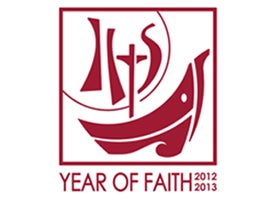Augustine’s
Way of Preaching
Introduction:
Preaching in the 21st Century
In 2010 a bishop
from South Africa was very much concerned with his priests’ homilies and this
concern came not from himself but from the people attending masses.
Bishop Mariano
Crociata, the secretary-general of the Italian bishops’ conference, has said
that many congregations’ minds are not sufficiently nourished by the quality of
the homilies they hear at Sunday Mass. “Too often, sermons are just boring
mush, unappetising fare, and certainly not too nourishing,” the bishop said,
urging priests to pay greater attention to their sermons.[1]
Moreover, it’s a common stereotype and assumptions that some homilies delivered
are extra-biblical or outside biblical context.
‘The problem seems
to extend across the world.’ Consequently, there had been numerous means to at
least help and equip priests in delivering homilies at the altar. There are
also aids to support preachers develop their preaching style through the
availability of technology. As the life of the Church continually tries to
explore new means to preach the Word of God, so let us re-examine the kind of
preaching that was developed in the past particularly in the time of Augustine.
Perhaps this is a way of revisit in order to know the kind of preaching
Augustine delivered. We might as well get a little piece of advice and
inspiration from this great father of the Church.
The intent of this
short paper is not to solve the perennial problem of preaching but rather to
give a little exposition of how Augustine defined the meaning of preaching in
his time.
Augustine’s
Preaching
In the early life
of the Church, the task of preaching was normally entrusted to a bishop. It is
a primary and important responsibility of a bishop since he is seen as the
spiritual link between the apostles and the contemporary disciples of the
period, like that of Augustine, the bishop of Hippo.
What did Augustine preach?“Augustine’s
preaching is Christocentric.”[2]
According to Doyle this is the thematic concept of all of Augustine’s sermons. He
could be Theocentric or anthropocentric yet his preaching always runs on the
salvific act of Christ. He further adds that Augustine reflects again and again
on the central importance of the Word made flesh in John’s Prologue more often
than any other biblical text. In fact over 1000 times in his surviving works
that he used this term repeatedly.[3](S.
187; 189; 212; 215; 272,1). As William Griffin quotes Pope, author of Saint Augustine of Hippo, ‘It was the
Bible all the time’ that Augustine preached.” “It is the quarry for all his
doctrine; it is the Word of God that feeds his soul and out of which he
‘provides old things and new’ for the spiritual needs of his flock.”[4]Augustine
as preacher acclaims that “They aren’t my sermons, anyway; I only speak at the
Lord’s command” (S. 82,15). And also he is only a caretaker of the Word of God
and it’s not about himself or even ideas. (S. 114,1)
How did Augustine do his preaching? There
is an estimate of 8,000 sermons that Augustine preached in his priestly and
episcopate life, which is according to Verbraken that includes Saturday and
Sunday liturgies, daily liturgies of Lent and Eastertime and not to mention
sermons in honor of saint and martyrs.[5]With
this given figure, we can picture an image of Augustine as a ‘long-winded’[6]
preacher. According Alvarez, OSA “mahahabaangkanyangmga
sermon, umaabothanggangdalawa o tatlongarawnakabanata!Bihirang-bihira and
maikling sermon niya (tuladng S. 320 at S. 321) natumagalnangdalawang minute
langyata dahlia siya ay may sakit noon!”[7] Moreover, scholars
have estimated that the average length of his sermons ranged from a half-hour
to as long as two hours in some instances.[8]
[This article is not yet done.]
[1]http://www.scross.co.za/2010/01/preaching-problem/
[2]
Augustine, The Works of Saint Augustine,
A Translation for the 21st Century: Essential Sermons, transl.
Edmund Hill, OP, ed. BonifaceRamsey, (New York: New York Press, 2007), 13.
[3]Ibid.,
13.
[4]
Augustine, Augustine of Hippo: Sermons to
the People, trans. And ed. William Griffin, (New York: Doubleday, 2002),
xxiii.
[5]
Pierre-Patrick Verbraken, “Saint Augustine Sermons: Why and How to Read Them
Today?” Augutinian Heritage 33 (1987), 110-122. This work was quoted by Daniel
E. Doyle, OSA, who wrote the introduction and Notes inAugustine, The Works of Saint Augustine, A
Translation for the 21st Century: Essential Sermons, transl.
Edmund Hill, OP, ed. Boniface Ramsey, (New York: New York Press, 2007), 13.
[6]Ibid.,13.
[7]
Emmanuel Czar Alvarez, OSA, “Paanoba
mag-Sermon?” in In Deum (Quezon City: Pacifico F. Manalili Printing Press,
March 2011), 25.
[8]The Works of Saint Augustine, A Translation
for the 21st Century: Essential Sermons, 13.


